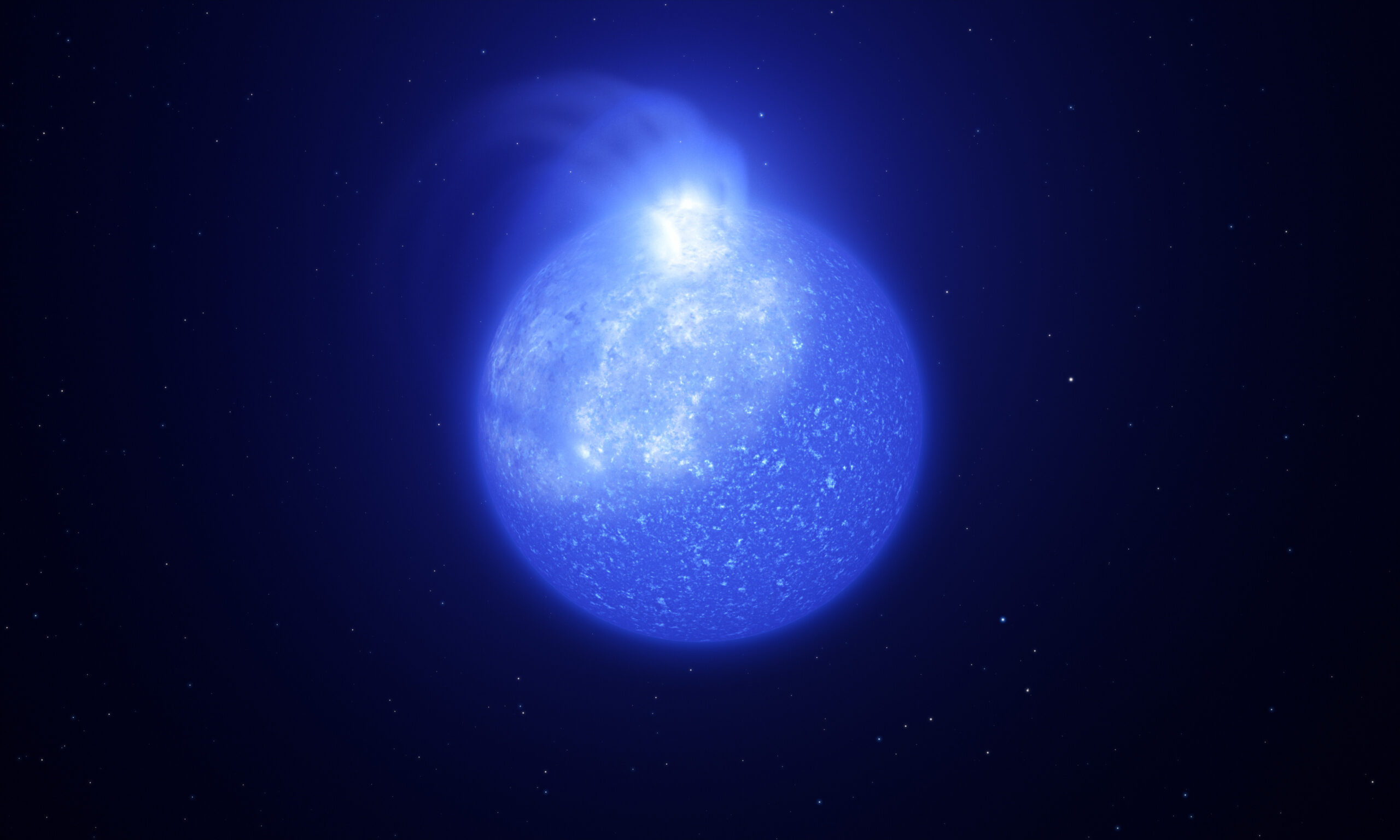A star’s mass determines its color and lifetime. Blue giants are massive stars, much more massive than the Sun, but they don’t burn as long as red dwarfs. This shade of blue is slightly different from what you see in the sky every night. The celestial kind is produced by combining blue with green to create cyan, called “additive color mixing.”
Stars are unlike anything we experience here on Earth. They’re hot enough to fuse atoms in their cores, and they burn for tens of billions of years. But the hottest stars don’t last forever—they eventually die, sometimes explosively. The most massive ones die out first, burning through all their fuel within a few million years. These blue giants flare up as supernovas then collapse into black holes, leaving behind relics like neutron stars and pulsars that continue to blaze with light for a long time.
Oxygen is the third most abundant element in the universe but the second most abundant one in our solar system. This makes oxygen an essential molecule for understanding how planets form and change over time. Oxygen is also vital to life on Earth! The blue color of giant stars can only be explained by including the effects of strong collision-induced absorption (CIA) of O$^+$. Using high-resolution calculations, we determine that this process shifts blue light into weaker lines.
A blue giant like Rigel, on the other hand, has a much higher effective temperature of 40,000 K. It’s up to a factor of ten hotter – and if you think that means Rigel looks ten times as bright in the sky as the Sun does, you’re in for a surprise. The hottest star of the universe is a blue supergiant. This star, called Eta Carinae, is situated in our galaxy, and it is so hot that it radiates most of its energy in the ultraviolet band of the electromagnetic spectrum. It was long considered one of the brightest stars in our galaxy but appears to be dimming over time. This has led scientists to believe that the star may undergo a supernova explosion in about 100 thousand years from now.
All-stars have a lifespan, but some are much shorter than others. The most massive stars burn through their fuel the fastest and end their lives in a spectacular explosion known as a supernova. Supernovae shine so brightly that they can briefly outshine all the other stars in their host galaxy combined.
Temperature of Blue Giant
In astronomy, the blue giant is a classification for hot B-type stars. These are large and have surface temperatures between 10,000 – 50,000 K. Blue giants are more desirable than the Sun but not as hot or massive as other high luminosity stars. Such as yellow hypergiants or Wolf–Rayet stars, which are generally considered at least 50,000 K. The upper-temperature limit is also lower than that of main-sequence or red supergiant stars.
The temperature of giant blue stars is a fascinating study area for stellar astrophysicists. The hottest stars in the universe can reach temperatures up to 150,000 Kelvin (K) or more.
Indeed, some of the hottest stars are blue giants because they are so large and bright that they appear blue. These stars have masses many times greater than the Sun’s mass and radii that can be hundreds of times larger than the Sun’s radius.
Why are these stars so hot?
As it turns out, some of these stars are hotter than others. The hottest stars are blue giants – specifically, O-type and B-type stars that burn through their hydrogen and helium fuel rapidly, eventually exploding as supernovae. Indeed, blue giants like Rigel can reach surface temperatures more than twice as hot as our Sun’s! These blue giants live fast and die young; for example, although Rigel has been around for about 12 million years (by comparison, our Sun has been around for 4.5 billion years), it will only last another 250 million years before becoming a supernova.
Stellar evolution of blue giants
When it comes to blue giants, there are two ways stars can die. One possibility is that they explode as supernovae after having spent their fuel supply. These explosions sometimes create black holes from which no light escapes. The other way blue giants die is by shedding most of their mass to space, eventually collapsing into white dwarfs or neutron stars called pulsars. In either case, once these massive stars have shed all but a small fraction of their initial mass, they become known as brown dwarfs. Brown dwarfs still burn with nuclear fusion, but not nearly enough to be considered true stars. They’re somewhere between planets and real stars on the stellar evolutionary scale—and right now astronomers are trying to figure out where exactly that puts them on our cosmic family tree.
![]()
